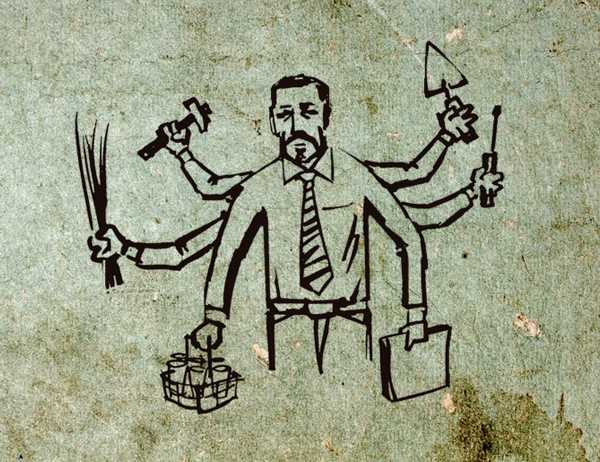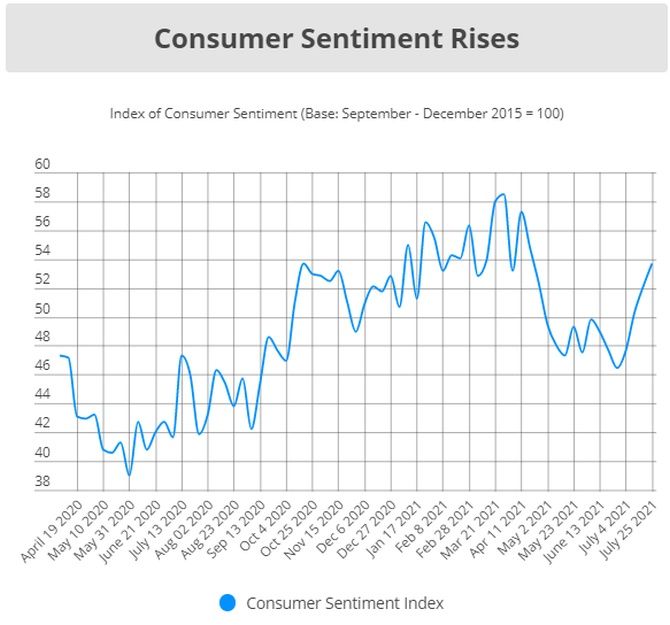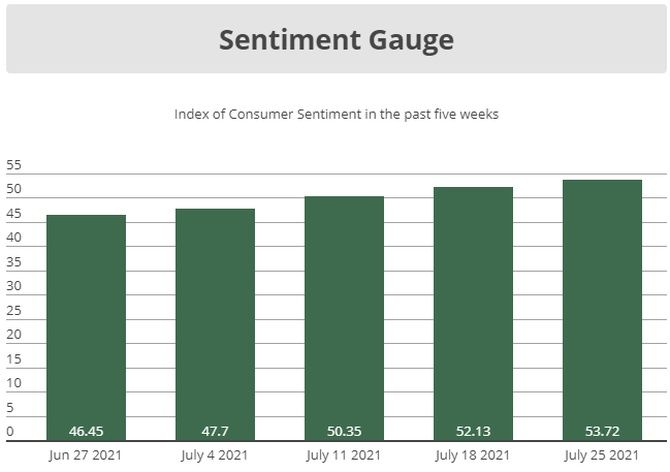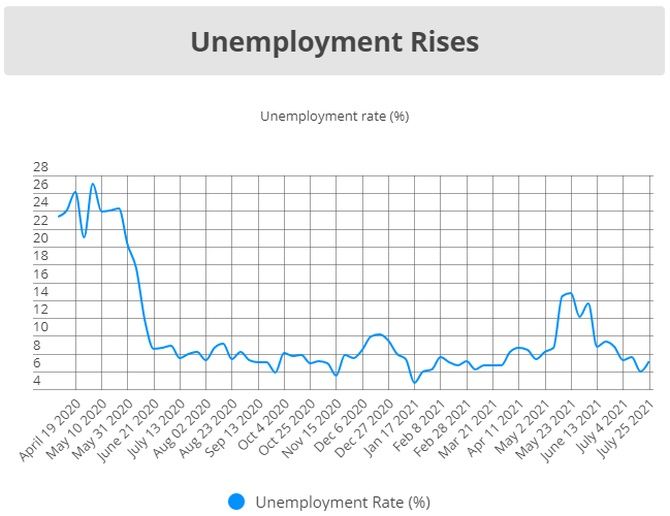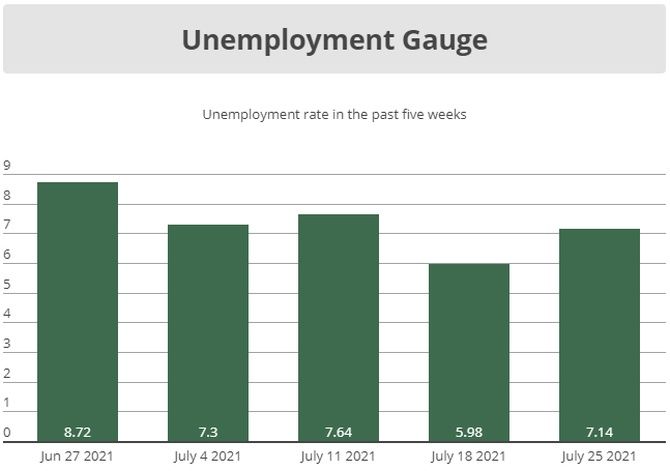The steady rise through most of July implies a greater demand for jobs.
And, most of this demand is being met, says Mahesh Vyas.
India’s economic recovery from COVID-19 shocks is V-shaped.
The recovery is rapid, but it peters out before it is complete.
Every shock, it seems, leaves a little transaction cost behind.
India can therefore choose to celebrate the rapid recovery from the excruciating pain of lockdowns or bemoan the steady erosion of well-being and growth potential.
A balanced view, of course, is a better option.
There is no doubt that the recovery from the first COVID-19 shock of early-to-mid 2020 was V-shaped. There were reasons to celebrate.
But it is now becoming increasingly clear that the recovery from that serious setback will not get India’s real GDP to where it was before the shock even by the end of March 2022.
The loss from where the earlier growth trajectory could have taken India has also widened compared to earlier expectations.
The labour participation rate remains 2.7 percentage points lower than its pre-Covid levels.
The employment rate remains 3.3 percentage points lower than the pre-Covid levels.
Labour statistics from CMIE’s Consumer Pyramids Household Survey demonstrate the V-shaped recovery from the first COVID-19 shock.
The unemployment rate first shot up from 7.8 per cent in the quarter ended March 2020 to 17.8 per cent in the following quarter that ended in June 2020.
Then it recovered quickly to 7.3 per cent in the quarter ended September 2020.
But the recovery was incomplete because the employment rate, which is the working age population that is employed, never repaired with its pre-Covid levels.
The employment rate was 39.2 per cent in the quarter ended March 2020.
It fell to 31.5 per cent during the pandemic quarter of June 2020 and recovered in the famous V-formation in the next quarter to 37.7 per cent in the quarter ended September 2020.
Then, it stalled at that level, unable to complete its recovery.
It has remained around that level till the second Covid wave hit India in April 2021.
CPHS indicates that a V-shaped recovery is underway again after the second wave of Covid-19 that struck India in April. We see this in the weekly data of July 2021.
The employment rate was 37.6 per cent in March 2021 before the second wave descended.
Weekly estimates show that the employment rate had touched 38.5 per cent in the week ended March 28.
Earlier, in the week ended January 24 it had touched 38.9 per cent.
It never reached 39 per cent — the lowest it was before the Covid-19 pandemic hit India.
India was still struggling to raise its employment rate to its pre-Covid levels when the second wave struck.
The employment rate fell to 36.8 per cent in April 2021 and then further to 35.3 per cent in May.
The rate fell to 33.6 per cent by the week ended May 23, 2021 and remained close to 34 per cent in the following two weeks as well.
The four weeks from May 10 through June 6 were the worst hit by the second wave. The employment rate averaged at 34.5 per cent during this period.
The recovery since that trough has been quick. Half of the recovery was achieved in the first week of the process.
This was the week ended June 13 when the employment rate sprung back to 36.3 per cent.
The remaining recovery came relatively gradually during July.
As of the week ended July 25, the employment rate was 38.2 per cent, just a little short of the 38.5 per cent level in the week ended March 28.
The recovery from the fall of the second wave appears to be more complete than the experience of the first wave, but, we must wait to confirm this from more data from larger samples than just weekly samples to test the sustainability of the recovery.
The 30-day moving average of the employment rate gives reasons to believe that this is a better recovery than from the first wave.
The 30-dma employment rate was 37.3 per cent as of July 25.
This compares well with the employment rate of 35.9 per cent clocked in the month of June or 35.3 per cent in May or 36.8 per cent in April 2021.
The July 2021 employment rate could end close to the March rate of 37.6 per cent. This is promising.
The optimism stems from the rising labour participation rate.
The LPR rose to 41.1 per cent in the week ended July 25. It was 40.4 per cent in the previous week.
It was also at 40 per cent or lower in each of the preceding three months.
The steady rise of the LPR through most of July implies a greater demand for jobs. And, most of this demand is being met.
The unemployment rate fell during the first four weeks ending in July. It was 7.3 per cent in the week ended July 4.
It fell to 6 per cent in the week ended July 18. This, perhaps, was too good to last.
As the LPR jumped to over 41 per cent in the week ended July 25, the unemployment rate shot up to 7.1 per cent. But, this isn’t too bad.
Most of the increased LPR was absorbed into employment. This is evident from the increase in the employment rate during the week.
The simultaneous increase in the LPR and the employment rate is what makes July 2021 promising.
Feature Presentation: Rajesh Alva/Rediff.com
Source: Read Full Article
